Comprehensive Care for Complex Restorative Dentistry Cases
Holistic Evaluation of Complex Dental Issues
Complex dental cases often involve multiple challenges, such as missing teeth, severe bite problems, extensive decay, and significant tooth damage. A thorough and holistic evaluation is the cornerstone of effective treatment. This involves a detailed assessment of the teeth, gums, jawbone, bite alignment, and any existing dental work. Advanced imaging technologies like 3D cone beam CT scans and digital X-rays play a crucial role in obtaining clear, three-dimensional views to guide precise diagnosis.
Full-Mouth Reconstruction Planning
When the damage is extensive, full-mouth reconstruction offers a comprehensive solution. It combines various restorative procedures into a tailored plan that addresses both function and aesthetics. Planning includes smile design software and digital workflows that create realistic visualizations and 3D models. Collaborating closely with dental labs and specialists ensures prosthetics like crowns, veneers, bridges, and implants are accurately fabricated for optimal fit and appearance. Treatments typically aim for completion within 1 to 2 months without compromising quality.
Preservation of Natural Tooth Structure
Modern restorative dentistry emphasizes minimally invasive techniques that conserve as much natural tooth structure as possible. Biomimetic and holistic approaches use biocompatible materials and ultra-thin veneers to reinforce teeth while maintaining their integrity. The goal is to restore dental health and function while ensuring long-term durability and patient comfort. This sustainable strategy promotes overall oral health and enhances the success of complex restorative treatments.
Holistic and Biomimetic Dentistry in Complex Cases
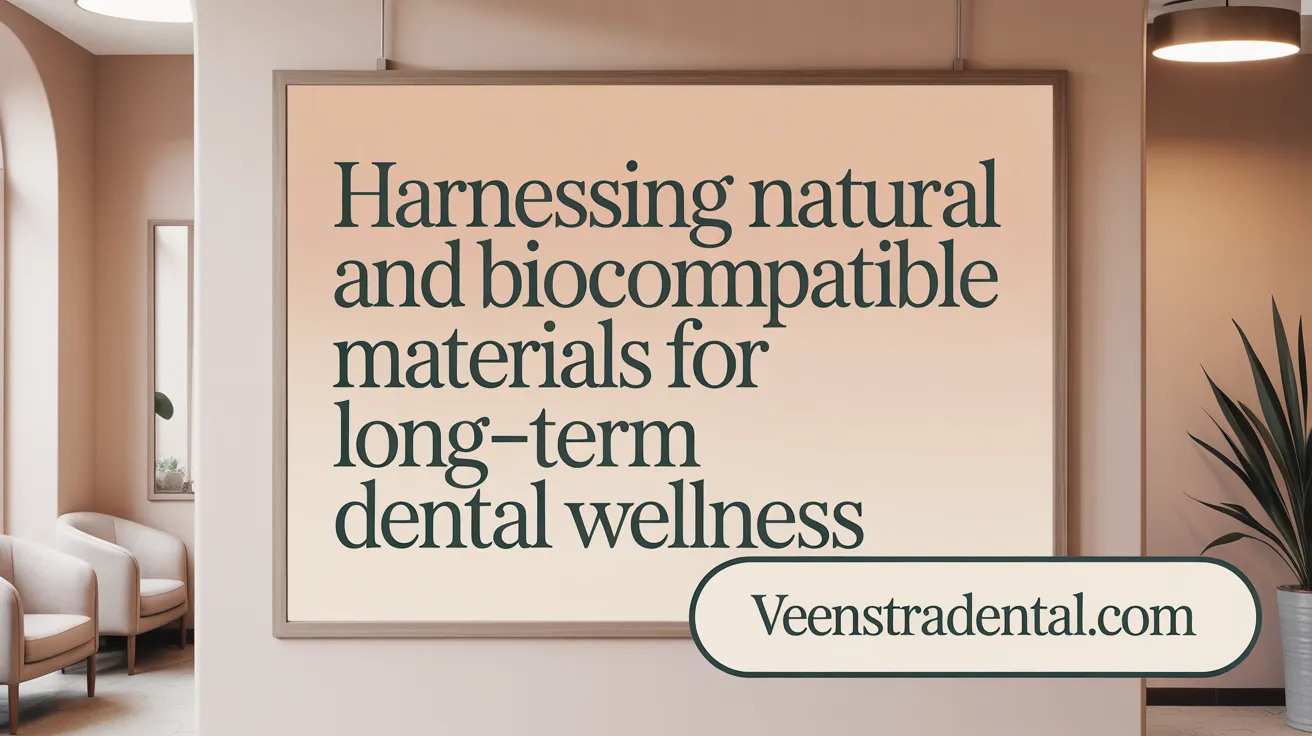
What is the role of biomimetic and holistic dentistry in complex dental cases?
Biomimetic and holistic dentistry play a crucial role in managing complex dental cases by focusing on treatments that preserve and strengthen the natural tooth structure. These approaches prioritize minimally invasive dental solutions and holistic dentistry techniques and the use of biocompatible dental materials, which help maintain the health of teeth and surrounding tissues over the long term.
How does preserving natural teeth benefit oral health?
Preserving natural teeth whenever possible is beneficial as it maintains the tooth’s strength and functionality, reducing the need for extensive future restorations. Natural teeth support jawbone health and contribute to better bite alignment evaluation, which is essential for overall oral function and aesthetics.
What materials are used in holistic restorative dentistry?
The use of biocompatible materials is central in holistic dentistry, minimizing adverse reactions and promoting tissue health. Advanced ceramics and composite resins that closely mimic the natural tooth’s biomechanics are commonly employed to achieve durable, aesthetic restorations.
What minimally invasive techniques are available?
One notable minimally invasive option is ultra-thin veneers, which enhance smile aesthetics while conserving significant tooth enamel. Such techniques reduce discomfort, preserve tooth integrity, and offer quick recovery times.
These patient-focused, conservative strategies in restorative dentistry leverage modern science and advanced dental technology to provide personalized, health-conscious care that supports long-term oral wellness.
Digital Technology Enhancing Precision and Predictability
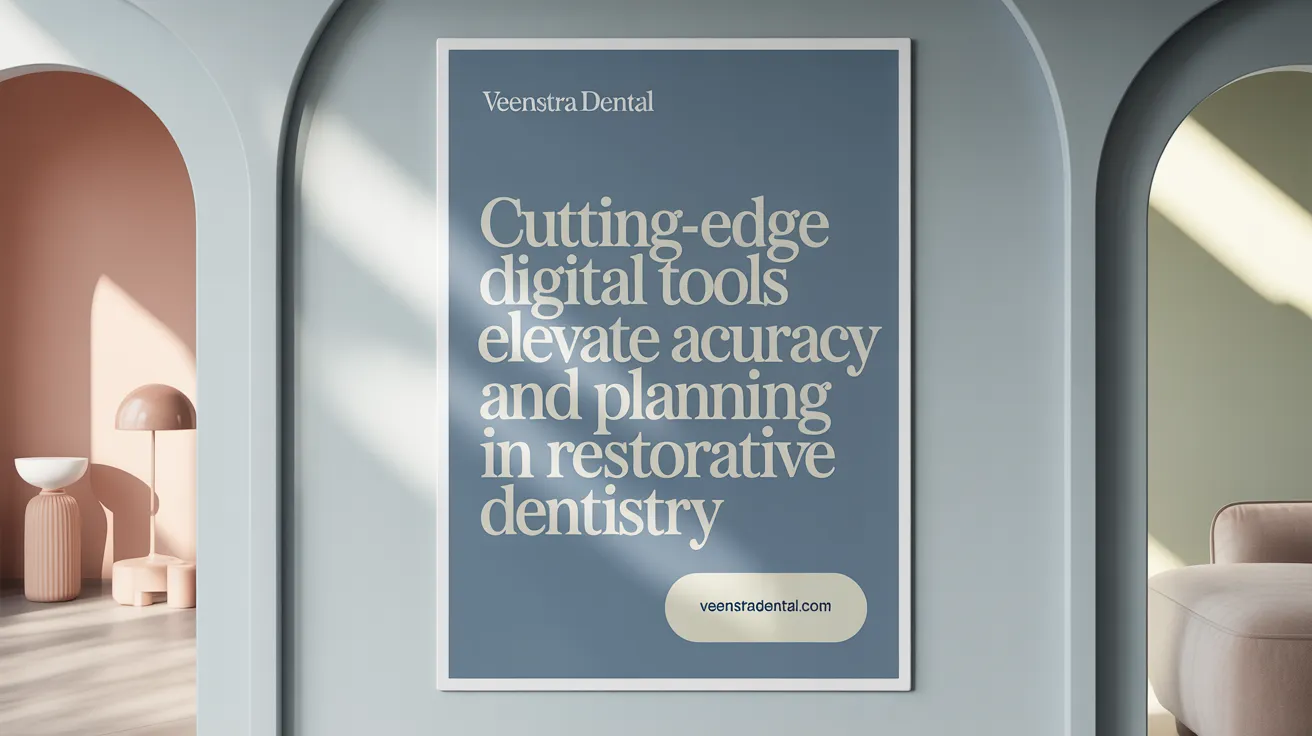
Digital workflows in complex restorative cases
Modern complex restorative dentistry relies heavily on digital workflows in restorative cases to manage complex cases efficiently and predictably. These workflows integrate patient data through comprehensive clinical dental evaluation, including detailed photographic documentation, radiographs, and cone beam CT scans in dentistry, to create precise treatment plans. This approach streamlines communication between clinicians and dental labs, ensuring accuracy and coordination throughout the treatment process.
Intraoral scanning and digital impressions
Intraoral scanning for dental impressions captures detailed optical images of teeth and soft tissues with high precision, replacing traditional impression methods. These digital impressions allow for the creation of accurate 3D models (.stl, .ply, .obj files) of the oral structures, improving the fit of restorations and enhancing patient comfort by avoiding messy, uncomfortable materials.
Smile design software and 3D CAD modeling
Smile design software enables the creation of realistic 2D representations of the desired smile, using artificial intelligence to generate images quickly. These designs are then converted into 3D CAD models, which are used to plan restorations in detail, including maximum intercuspal position (MIP) and occlusal vertical dimension (OVD) adjustments. This digital planning enhances patient understanding and facilitates precise restoration design tailored to individual needs.
Provisional and final restorations with CAD/CAM and 3D printing
Provisional restorations can be fabricated rapidly using 3D printing in dentistry with acrylic resin shells or solid casts, allowing for intraoral evaluation and adjustments before final restoration creation. Final restorations, often milled from materials such as zirconia ceramic restorations, benefit from CAD/CAM technology in dentistry, providing durable and esthetic results with exact fit. This integration of digital technology minimizes treatment time and enhances outcomes even in the most complex restorative dentistry cases.
Advanced Imaging and Treatment Planning Tools
How Does CBCT 3D Imaging Improve Diagnosis and Treatment Planning?
Cone Beam Computed Tomography (CBCT) provides high-resolution, three-dimensional images of teeth, bone structure, nerves, and soft tissues. This detailed visualization helps dentists accurately diagnose conditions such as hidden root fractures, early infections, bone density issues, and impacted teeth. The technology is invaluable for planning complex procedures like implant placement, orthodontics, and oral surgery. CBCT scans are quick, minimally invasive, and expose patients to lower radiation compared to traditional CT scans, making the diagnostic process safe and efficient.
What Are the Key Elements of Detailed Clinical Evaluations?
Clinicians perform comprehensive assessments using clinical photos, digital radiographs, and CBCT imaging. Photographic documentation captures standard views of the smile and oral tissues, supporting precise diagnosis and communication. Radiographs reveal internal tooth and bone conditions, while CBCT adds 3D insight into anatomical structures, assisting in identifying challenges early. Combining these tools allows for a thorough understanding of the patient's dental health, ensuring personalized and effective treatment plans.
How Do Digital Smile Design and Virtual Articulators Enhance Planning?
Digital smile design software uses 2D and 3D imaging to create a visual preview of the proposed dental treatment, enabling patients to see realistic outcomes before therapy begins. Virtual articulators simulate jaw movements and occlusion, allowing dentists to design restorations that harmonize with the patient's bite. These tools improve communication between patient, dentist, and lab technicians, supporting precise restoration fabrication and minimizing surprises.
Why Is Collaborative Planning Important for Complex Cases?
Managing cases with multiple procedures requires coordination between the dental team and specialists. Using advanced imaging and digital workflows ensures that each step—from diagnostics to surgical and restorative treatments—is carefully sequenced. Collaborative planning helps anticipate challenges, integrate various treatments such as implants, crowns, and orthodontics, and optimize both functional and esthetic results while minimizing patient visits and recovery time.
Together, these advanced imaging and treatment planning tools provide a comprehensive framework that enhances the accuracy, predictability, and patient experience in restorative dentistry.
Wide Array of Restorative Procedures for Complex Needs
Dental Crowns, Bridges, Implants, and Veneers
Dental crowns are custom-made caps that cover damaged or weakened teeth to restore their shape, strength, and appearance. They are often used after root canals or large fillings. Bridges fill gaps left by missing teeth by anchoring artificial teeth to adjacent crowned teeth or implants, improving chewing and speech. Implants offer a durable, natural-looking solution by replacing both tooth roots and crowns with titanium posts fused into the jawbone. Veneers, including ultra-thin types, are used to enhance and transform smiles while conserving natural tooth structure, ideal for chipped or discolored teeth.
Root Canal Therapy and Full-Mouth Reconstruction
Root canal therapy removes infected pulp within a tooth, cleans, and seals it to save the tooth and prevent further damage. Following treatment, a crown is usually placed to restore strength. Full-mouth reconstruction combines multiple procedures—such as crowns, bridges, implants, and veneers—with a holistic treatment plan evaluating teeth, gums, jaw, and bite to restore both function and aesthetics. This approach addresses severe decay, bite issues, and tooth damage, often completed efficiently with digital workflows in restorative cases.
Conservative Restorations: Inlays, Onlays, Composite Bonding
Inlays and onlays are conservative restorations used when damage is moderate but too extensive for simple fillings. They are custom-crafted to fit inside or over tooth surfaces, preserving more natural tooth structure than crowns. Composite bonding repairs chips, cracks, or gaps using enamel-like resin that matches natural teeth, offering a minimally invasive and esthetic treatment option.
Replacing Missing Teeth: Implant-Supported Options and Dentures
Implant-supported restorations include single crowns, bridges, or full-arch dentures anchored to titanium implants, providing stability, preventing bone loss, and mimicking natural teeth. For patients requiring multiple teeth replacement, traditional partial or full dentures remain viable options, fitting over gums or remaining teeth. Both implant-supported and conventional dentures improve oral function and appearance, tailored to individual needs and preferences.
This comprehensive set of restorative procedures leverages advanced materials, biomimetic principles, and digital technology, ensuring personalized treatment for complex dental needs while prioritizing preservation and aesthetics.
Integrating Regenerative Dentistry and Stem Cell Therapies
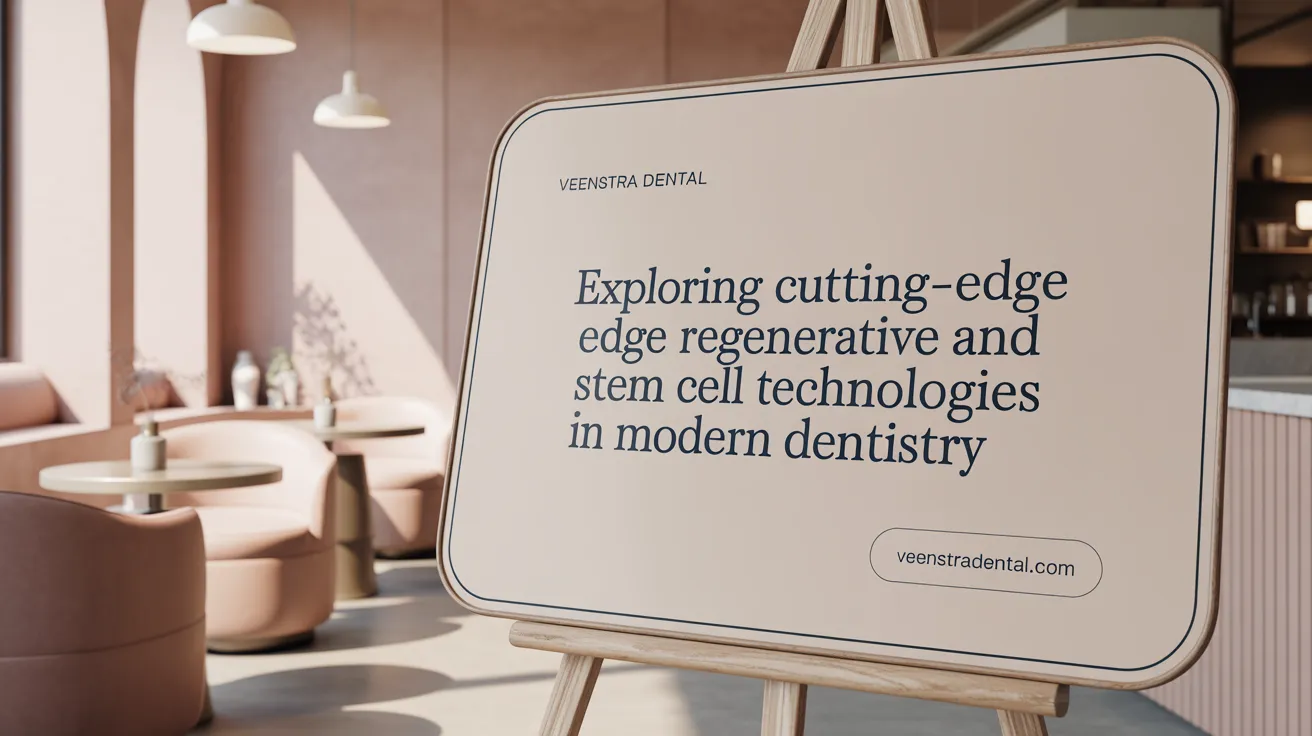
What Are the Emerging Tooth Regeneration Drug Trials?
Human trials for a revolutionary tooth regeneration drug began in September 2024 in Japan, focusing on suppressing the USAG-1 gene suppression. This suppression aims to activate dormant tooth buds, potentially growing new teeth beyond the natural number. The treatment involves monoclonal antibody treatment for tooth growth via intravenous infusion and targets adults missing at least one tooth. Earlier animal studies on tooth regeneration indicate promising results with no major side effects, signaling a safe profile for human use.
How Do Stem Cells Support Bone and Tissue Regeneration?
Stem cell therapy in dental regeneration enhances the body's natural healing by regenerating bone, gum tissue, and dental pulp. Stem cells can differentiate into bone, ligament, and nerve tissues, improving outcomes in complex procedures such as full-mouth reconstructions and implant placements. These therapies reduce healing times, support softer tissue recovery, and increase bone volume in areas where implants were previously not feasible.
What Is the Future Potential of Combining Regenerative Techniques with Conventional Restorations?
The future of restorative dentistry likely includes blending regenerative medicine—like stem cell therapy and tooth regeneration drugs—with traditional treatments such as implants, crowns, and bridges. This integration can optimize patient outcomes by restoring both the biological and functional aspects of teeth. Modern digital planning and biomimetic approaches will facilitate seamless coordination of these advanced therapies.
Who Benefits Most From These Emerging Regenerative Therapies?
Patients with congenital missing teeth, those who have suffered trauma or periodontal disease leading to tooth loss, and the aging population with extensive tooth loss stand to benefit significantly. These regenerative solutions offer less invasive, faster-healing options that preserve natural structures and improve the longevity and success of restorative treatments.
Integrating regenerative dentistry and stem cell therapy represents a transformative approach to complex dental restoration cases, promising improved biological integration, functional restoration, and overall patient well-being.
Minimally Invasive and Patient-Centered Techniques
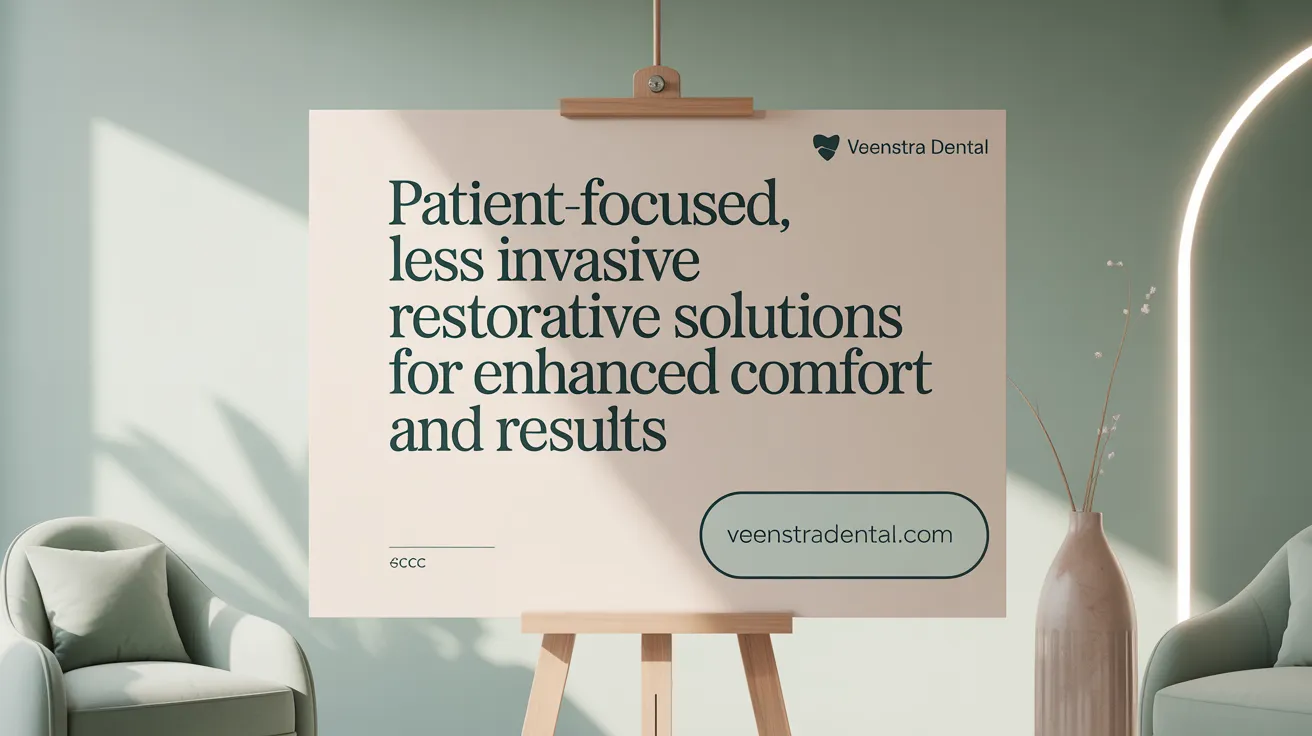
How does laser dentistry enhance patient comfort and healing?
Laser dentistry offers a more comfortable, less invasive alternative to traditional drilling methods. It gently removes decay and shapes gum tissue with minimal discomfort, often without the need for anesthesia. This results in quicker healing times, less bleeding, and fewer follow-up visits. Patients benefit from a less stressful experience and faster recovery.
What are microdentistry and air abrasion, and how do they preserve natural tooth structure?
Microdentistry focuses on conserving as much of the natural tooth as possible. Techniques like air abrasion use a fine stream of abrasive particles to remove decay without excessive drilling. This preserves healthy enamel and dentin, promoting stronger, longer-lasting teeth and reducing trauma during treatment.
Which materials are preferred for their biocompatibility and aesthetic qualities?
Modern restorative dentistry employs biocompatible, tooth-colored ceramics and composite resins. These materials not only blend seamlessly with natural teeth but also are safe for the body. Ceramics offer durability and a natural appearance, while advanced composite resins provide excellent adhesion, strength, and polishability.
How are treatment plans customized and communicated to patients?
Personalized treatment plans are developed after comprehensive evaluation and detailed imaging. Patients receive education about their options, expected outcomes, and care requirements. This transparent communication empowers patients to make informed choices aligned with their oral health goals and cosmetic preferences.
Utilizing minimally invasive techniques paired with patient-centered care ensures that restorative dentistry improves both treatment success and overall patient satisfaction.
Role of Advanced Dental Labs and Material Innovation
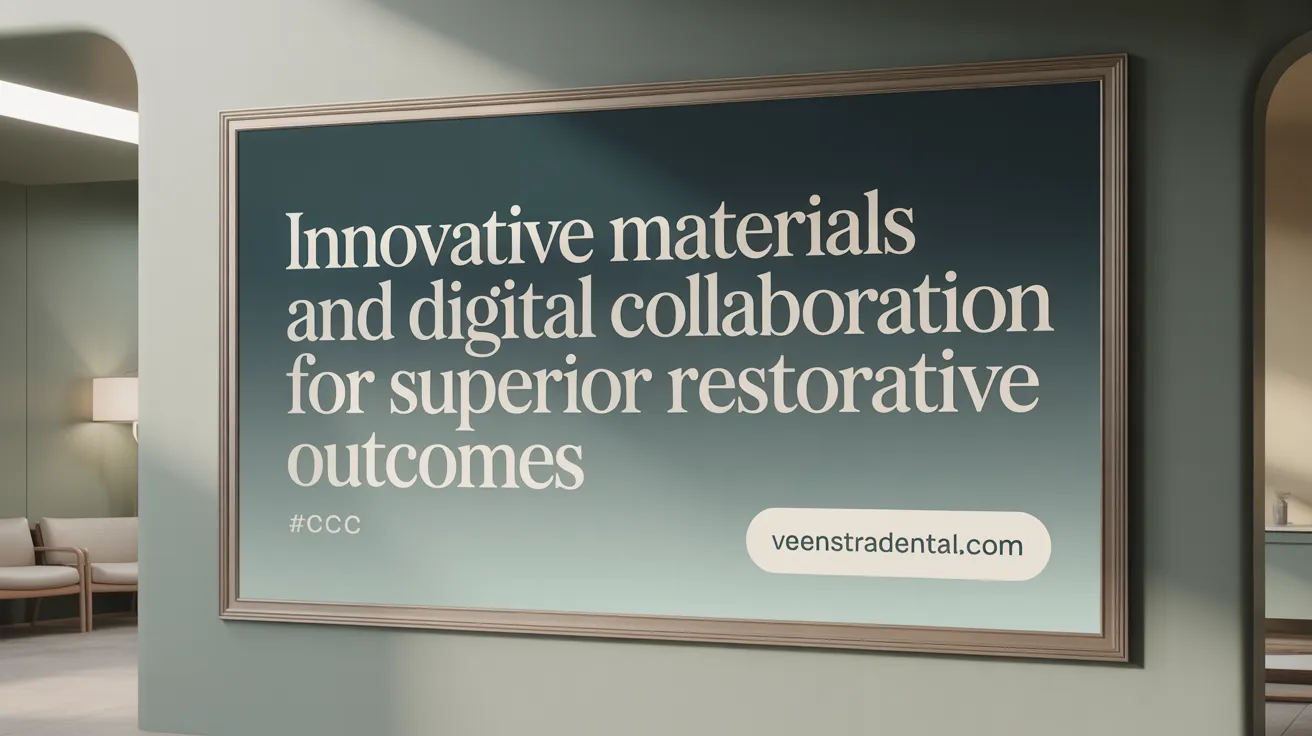
Use of Zirconia, IPS e.max, and Advanced Ceramics
Modern restorative dentistry increasingly relies on high-strength, biocompatible materials such as zirconia and IPS e.max. Zirconia offers exceptional durability and esthetic qualities, effectively masking underlying tooth discoloration while providing a natural look. IPS e.max, a lithium disilicate ceramic, is prized for its superior translucency and strength, ideal for layered restorations that blend seamlessly with existing teeth.
Collaboration Between Clinicians and Digital Dental Labs
Successful complex restorations depend on close communication between dentists and advanced dental labs. Digital workflows facilitate this partnership by enabling the exchange of detailed digital impressions, treatment plans, and restorative designs. This collaborative approach ensures restorations are tailored to patient needs and esthetic goals while maintaining long-term functionality.
3D Printing and CAD/CAM to Optimize Restorations
Dental labs now employ CAD/CAM technology in dentistry and 3D printing to produce precise restorations rapidly. Computer-aided design transforms 2D treatment plans into 3D models, which can be milled or printed to create crowns, bridges, or implant frameworks with high accuracy. This innovation reduces turnaround time, improves the fit and strength of restorations, and allows for efficient fabrication of provisional restorations.
Educational Resources for Clinicians to Enhance Outcomes
Leading dental labs provide educational materials such as prep guides, digital workflow protocols, and case success guides. These resources empower clinicians to optimize treatment planning and execution, fostering predictability and enhanced results in complex restorative cases. Continuous learning combined with technology integration advances clinical outcomes and patient satisfaction.
The Future of Complex Restorative Dentistry
Permanent, Durable Solutions Like Implants and Modern Bridges
Restorative dentistry is moving towards permanent and durable solutions that effectively restore function and aesthetics. Dental implants remain a cornerstone, utilizing titanium posts that fuse with the jawbone through osseointegration. This process guarantees stability and a natural look, with careful planning ensuring long-term success. Modern bridges crafted from biocompatible materials such as zirconia and porcelain replicate natural teeth appearance and deliver robust strength for lasting use.
Ongoing Advances in Technology and Biomaterials
Technological and material innovations are revolutionizing complex restorative treatments. Digital workflows involving 3D imaging, CAD/CAM technology in dentistry and 3D printing allow precise design and fabrication of crowns, bridges, and implant components. Biomimetic dentistry uses materials and techniques that preserve natural tooth structure while enhancing strength, durability, and aesthetics. These improvements reduce invasiveness and speed recovery, improving both patient comfort and treatment outcomes.
Artificial Intelligence, AR/VR for Improved Diagnostics and Patient Experience
Artificial intelligence (AI) assists clinicians by analyzing patient data to optimize treatment plans, enhancing accuracy and personalization. Augmented reality (AR) and virtual reality (VR) technologies improve patient education by visualizing treatment outcomes and help manage dental anxiety through immersive experiences. These tools foster clearer communication and increased patient confidence throughout complex restorations.
Sustainability and Interdisciplinary Approaches for Comprehensive Care
Emerging trends emphasize sustainability in restorative dentistry, promoting eco-friendly materials and energy-efficient practices that reduce environmental impact. Interdisciplinary collaboration among specialists integrates surgical, prosthetic, and digital expertise for seamless, comprehensive care. This holistic approach ensures treatments address functional, aesthetic, and long-term oral health goals in complex cases, always tailored to individual patient needs.
Comprehensive, Technology-Driven Care for Lasting Restorative Success
Integrating Advanced Technology with Compassionate Care
Modern restorative dentistry combines cutting-edge technology with a patient-focused approach to deliver both effective and comfortable treatments. Utilizing digital tools like 3D imaging, CAD/CAM design, and CBCT scans, dentists create precise treatment plans and restorations tailored to individual needs. Laser dentistry and 3D printing further enhance accuracy while minimizing invasiveness and recovery time.
Importance of Personalized Treatment Planning
Every patient’s smile is unique, requiring thorough evaluations that consider oral health, function, and aesthetic goals. Advanced diagnostic tools, such as intraoral scanners and digital smile design software, enable dentists to simulate outcomes and communicate clearly with patients. Careful planning ensures treatments align with long-term oral health and maximize restoration longevity.
Benefits of Holistic, Minimally Invasive, and Regenerative Approaches
Preserving natural tooth structure is a priority through biomimetic techniques and the use of biocompatible materials. Minimally invasive procedures reduce discomfort and protect healthy tissues. Emerging regenerative therapies, including stem cell applications, promise enhanced healing and tissue restoration, offering hope for durable, natural smile reconstructions.
Enhancing Patient Outcomes and Confidence through Innovation
By integrating technology with compassionate care, restorative dentistry improves not only function and appearance but also psychological wellbeing. Immediate, personalized solutions boost patient confidence and facilitate easier maintenance. This comprehensive, modern approach delivers lasting results and a welcoming experience for patients of all ages.
